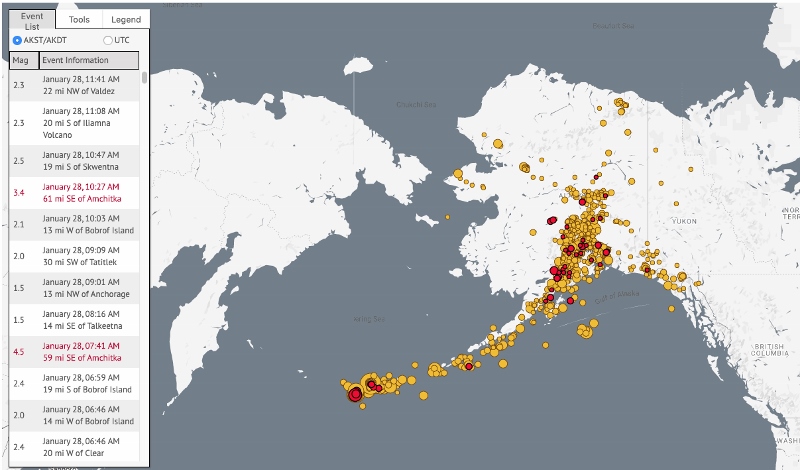This morning, residents in Alaska's Bristol Bay region reported waking to a magnitude 3.6 earthquake near the proposed Pebble Mine site just before 6 a.m.
Earthquakes in Alaska are nothing new. But the rate of activity has increased. According to the Alaska Earthquake Center, 2018 and 2019 took first and second place for the most earthquakes recorded in the state: "With a total of 50,289 reported earthquakes, 2019 finished as a runner up to the record-breaking 2018. The earthquake depths ranged between zero and 165 miles."
What does this have to do with mining and fisheries? Stay with me.
As we cannot yet predict seismic activity, we do the next best thing: Build to withstand earthquakes.
The 7.1 quake that hit Anchorage in November 2018, followed by a 5.7 aftershock and hundreds of aftershocks for days and weeks after, caused no fatalities. Why? Because we have engineered our lives and structures to survive earthquakes, especially in the Ring of Fire.
That leads us back to Pebble Mine, its rushed draft environmental impact statement and the lackluster data it's based on. Almost one year ago, the Army Corps of Engineers released the draft EIS and took comments from March 1 through June 29.
Many of those comments centered on the draft's scientific failures. Scientists from all fields came out to question the shaky science on which the document was drafted.
The Corps reports now that it will take an additional three months to review the influx of comments it received. And yet, the Corps reports, the EIS is set to be published without critical information.
In mid-January, a Corps leader told KTUU in Anchorage that the final environmental impact statement it releases on the proposed mine plan would "not include an analysis of the impacts of a tailings dam failure."
A tailings dam more than 500 feet tall will be built into highly permeable soil in remote Alaska in the Ring of Fire, upstream of the world's most productive sockeye streams. And the Corps environmental impact assessment will not include a review of the effects on the region if that dam fails in any way for many lifetimes to come.
There is still time to push back. Commercial Fishermen for Bristol Bay, the United Tribes of Bristol Bay and many other groups are still working to spread the word on the threats this mine creates to our nation's single largest source of wild salmon.







